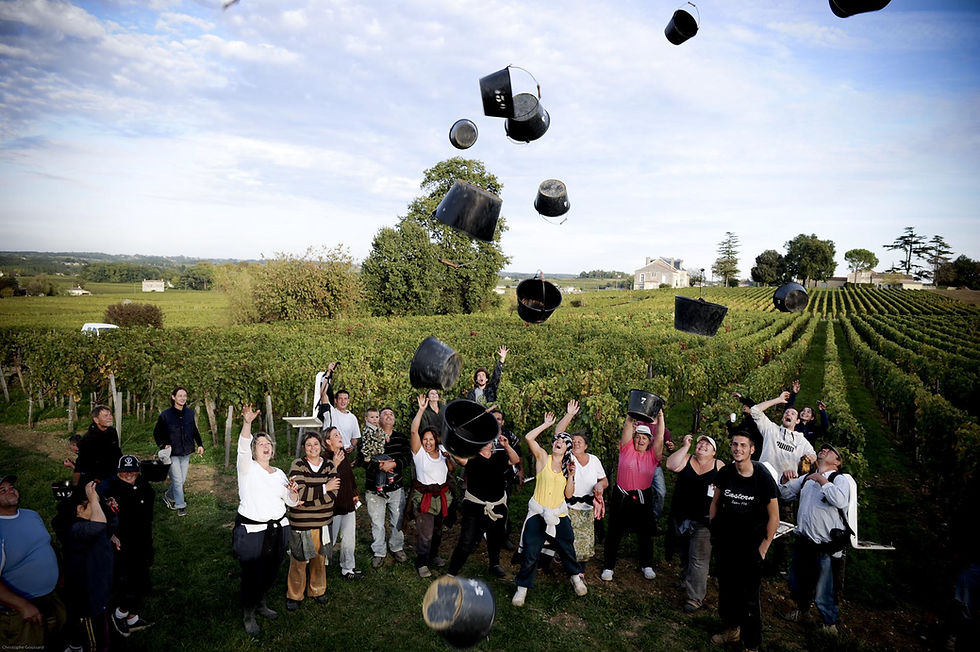WINE REVIEW: Bordeaux Bargains - Recent Examples
- andychalk
- Feb 10, 2021
- 2 min read
by Andrew Chalk

The Bordeaux region of France is one of the most famous wine growing areas in the world. Its familiarity is led by standard-setting red wines framed around five grapes: Cabernet Sauvignon, Cabernet Franc, Merlot, Malbec and Petit Verdot. The eye-popping prices of the most famous wines (which can easily exceed $200/bottle) might lead you to look elsewhere, but that would be an impetuous decision. In fact those Grand Crus as they are known account for only a few percent of the region’s output. The vast bulk of Bordeaux wine sells for prices that make them currently (tariffs notwithstanding) excellent value for money.

This is the story of three of those wines, all great value, and grown within three of the designated areas within Bordeaux. Listed in order of price:

2019 Château Peybonhomme ‘L’Atypic’, Vins de France ($15)
This wine, from biodynamically grown grapes, is 60% Malbec (known at Côt in Bordeaux) and 40% Cabernet Franc. It is labelled as ‘Vins de France’, indicating that the grapes could legally originate anywhere in France. However, the cork contains the words ‘Mis en Bouteille au Château’ (literally ‘put in the bottle on the property’, but epigramatically meaning that the grapes were grown, and the wine made, on the property). Given that this wine could be called ‘Bordeaux’ (the winery is in the town of Cars) it is a puzzle as to why the Hubert family chose to use the more generic appellation. Nonetheless, this product of clay and limestone soils is a clean and well-made example priced very reasonably.
The appearance is a concentrated ruby hue with purple rim. The nose is enchantingly perfumy with rose petals. The fruit is fresh and marked by blackberries. On the palate this wine is fruit forward blackberry, exhibits minimal oak use, and has medium-plus acid;

2019 Château Lauduc ‘L’Invincible’, Bordeaux, France ($18)
The grapes or this 100% Merlot wine came from a six acre plot on clay and limestone soil. Te vineyard is in the town of Tresse, just east but close to the city of Bordeaux. To make the wine, it was subjected to a cold soak and sulfur-free vinification.
The appearance is purple with a translucent core. The nose is vineous at first, but this blows off revealing, cigar box hints of oak. Cassis fruit. Overall a pleasing first impression. In the mouth, the wine is young, fruity, with precocious tannins, medium plus acid, cassis fruit but also an underlayer of forest floor, and a note of chocolate. The velvet tannins make this wine especially enjoyable.

2014 Château La Prade, Francs, Côtes de Bordeaux, France ($22)
The Bordeaux region encompasses over 50 sub-appellations. To gain more prominence, in 2009 four (later five) appellations (Cadillac, Côtes de Blaye, Côtes de Castillon, and Francs, then Sainte-Foy) formed a marketing alliance named Côtes de Bordeaux. The four appellations already produced wines of similar character in which Merlot formed the backbone. From personal experience I agree that their modern-day quality is unrecognized.
This wine has translucent brick red hue, reflecting its six years of age. The nose is smoky with cassis fruit. On the palate there is medium plus acid, licorice, chocolate, and a long finish.
Overall, three very enjoyable wines. All good value. Look for these and other Bordeaux ‘for regular folks’ on your next shopping spree.
Samples







Comments